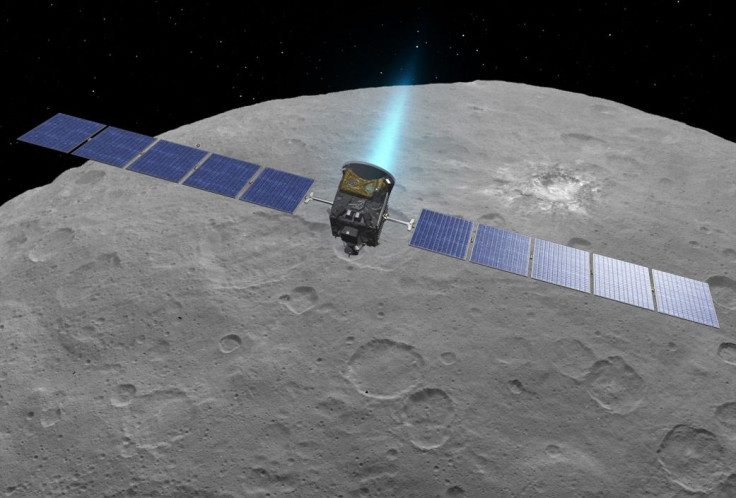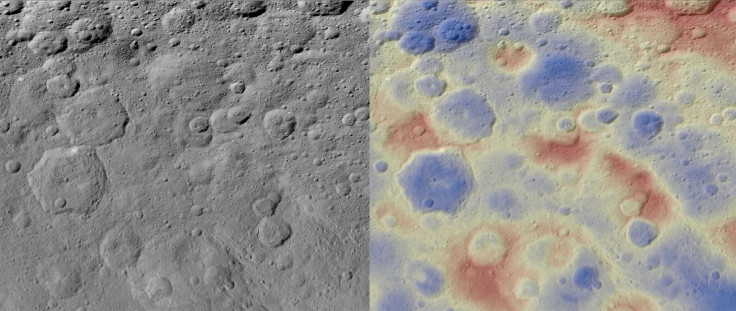NASA Shares Dawn Images Of Kwanzaa Tholus On Dwarf Planet Ceres

As the African-American community celebrates Kwanzaa, a festival that has its roots in ancient African harvest celebrations, NASA on Wednesday released images of a feature on the surface of Ceres called Kwanzaa Tholus. It is a small mountain on the surface of the dwarf planet, a type which is common to the region of Ceres where it is located.
The word tholus is derived from the Greek word tholos, and means a small dome-shaped hill or mountain (tholos means a circular building with a conical or vaulted roof). Kwanzaa is from Swahili and means “first fruits,” in reference to the harvest.
Kwanzaa Tholus is in the northeastern part of Ceres, and measures about 22 by 12 miles (35 by 19 kilometers), rising about 2 miles above its surroundings. The rounded shape and gentle elevation of the tholus makes it difficult to spot in the black and white mosaic captured by NASA’s Dawn mission, but the space agency also provided an elevation map of the region that makes it easier to spot.
In the images, Kwanzaa Tholus appears just above and to the right of the center, conspicuous by a sliver of a shadow in the monochrome photograph and appearing like a light-blue, strangely-angled “D” in the elevation image.

There are a large number of tholi (plural of tholus) in the vicinity of Kwanzaa Tholus, and the region is also home to slightly bigger mountains called montes. Six of the tholi have been named in the current map of Ceres.
At some point in Ceres’ past, Kwanzaa Tholus may have been as prominent as Ahuna Mons, the most noticeable mountain on the dwarf planet, because it is also the tallest. Ahuna Mons lies to the south of Kwanzaa Tholus, near the equator. It is thought to be a cryovolcano, which erupts in a release of “frigid, salty water sometimes mixed with mud,” but it is not active anymore.
Typically, volcanic activity, like on Earth or Mars or Saturn’s moon Enceladus, requires the body to be rocky or icy, but Ceres is neither. Instead, it is made of salts, muddy rocks and water ice, and the presence of a once-active volcano on it challenges our understanding of volcanism.
Also, because ice is not strong enough by itself to sustain an elevated structure like a mountain for a long period of time, a NASA statement accompanying the image explained that cryovolcanoes on Ceres are expected to degrade over time, losing their height through tens of millions of years. Even Kwanzaa Tholus, as well as other tholi, could have been formed as a result of such degradation of a cryovolcano.
NASA launched the Dawn mission Sept. 27, 2007, with the aim of studying two protoplanets in the asteroid belt — Vesta and Ceres. It orbited Vesta for 14 months, starting July 16, 2011, and entered an orbit around Ceres on March 6, 2015. Dawn’s mission has been extended to sometime in 2018, when its fuel will run out.
© Copyright IBTimes 2024. All rights reserved.





















